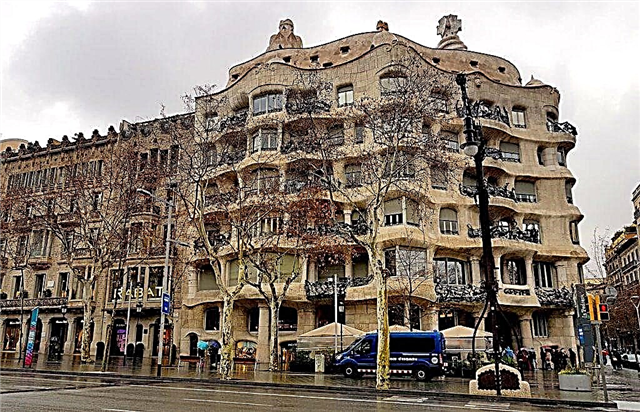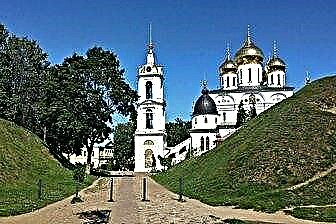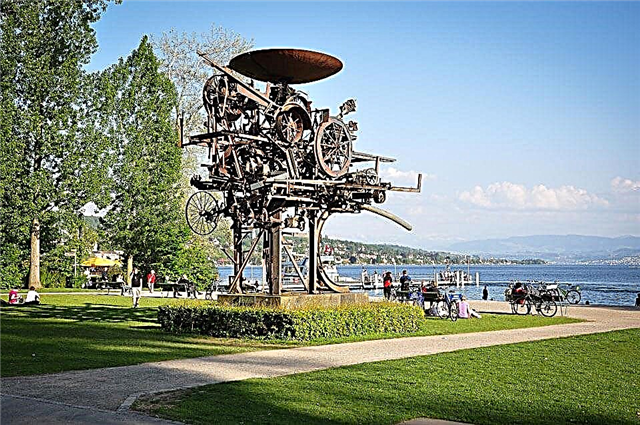Nizhny Novgorod is not so far from Moscow, and therefore its monasteries have always been strongly influenced by the Moscow Patriarchate and received significant support from the tsarist treasury. These monasteries were founded many centuries ago, and in their lifetime have survived the raids of enemy troops, and devastating fires, and contributions from the state. To date, three cloisters have survived within the city's development - two for men and one for women. All of them are part of the Nizhny Novgorod diocese.
The origins of monastic asceticism
In 1221, the warriors of the Vladimir prince conquered the Obran Osh fortress, located at the mouth of the Oka. It was the outpost and customs office of the medieval Mordovian state Erzyan Mastor. Arriving in these places, the Russians founded their own fortification here, which laid the foundation for Nizhny Novgorod.
In those days, the Orthodox faith was already quite widespread in Russian villages and cities. And, naturally, the settlers on the new lands began to convert local residents to Christianity. By that time, Erzya had developed ideas about the world order, similar to many other peoples. They believed that the soul is the bearer of life, and were convinced that after death it goes to the afterlife - "tonachi". Therefore, in many ways, the inculcation of Christian values in the Nizhny Novgorod lands took place naturally, in a non-violent way. Although there were frequent military clashes between the Russians and the Mordovians for the possession of certain territories.
At the initial stage of the development of Orthodoxy in Russia, itinerant monks were a common occurrence. Those who were literally looking for faith “in the world” and preached, as best they could, the foundations of Christianity, walked along the roads. In some places they united into monastic communities. This is how the history of the Pechersky monastery for men began.
But most often, Orthodox monasteries were founded by local princes. They were used as fortresses that could help the defense of new cities from enemy raids, and at the same time as centers for the spread of the Christian faith. This is how the Annunciation Monastery appeared, built primarily in order to strengthen the city's defenses from the side of the river.
Annunciation Monastery

View of the Annunciation Monastery from the Kanavinsky Bridge
The history of the foundation of the monastery is closely intertwined with the founding of the city. They appeared almost simultaneously - in 1221. Therefore, the Annunciation Monastery is rightfully considered the oldest Christian monastery in Nizhny Novgorod. The initiators of the construction of the monastery-fortress were the clergy, in particular the head of the Vladimir diocese - Bishop Simon, and Prince Yuri Vsevolodovich, on whose shoulders lay the difficult work of arranging a new Russian settlement at the mouth of the Oka River.
The Christianization of the surrounding lands was not easy. The Mordovian prince Purgas did not want to put up with the loss of the vast territories that belonged to him and the conversion of local residents to the Orthodox faith. In 1229, in response to the invasion of Russian troops, he raided the city and burned down a new monastery to the ground.
In the XIV century, the monastery received the patronage of the Moscow Metropolitan and quickly began to turn into a large feudal economy. She was helped not only from the Moscow treasury. Nizhny Novgorod merchants, artisans and ordinary townspeople donated to the monastery needs. Some brought food for the monks. Others supplied the monastery with the necessary building materials and repaired dilapidated buildings.
The construction of the Nizhny Novgorod (Makarievskaya) fair breathed new life into the Annunciation Monastery. The monastery was located directly opposite the entrance to the fair and attracted many pilgrims and donors.
Today, on the territory of the revived male monastery, you can see the Annunciation Cathedral and the Assumption Church, built in the 17th century, as well as the Alekseevsky Church, which housed the planetarium during the Soviet era. There is also a recently restored small church of St. Sergius of Radonezh and the source Gremyachy Klyuch, to which many Nizhny Novgorod residents go.
The monastery is located not far from the Kanavinsky bridge, at 8 on Melnichny lane.
Holy Cross Convent

Exaltation of the Holy Cross Monastery from a bird's eye view
The first nunnery appeared near the mouth of Pochayna in the 14th century. It was founded by the widow of the Nizhny Novgorod prince Anastasia. Despite the high title and wealth, this woman was not destined to know the joys of motherhood. When her husband was gone, the princess lived the world for four years, and then took monastic vows under the name of Theodore and began to live in the new Conception monastery.
The monastery was small and wooden and often burned in fires. In addition, many springs were beating near the mouth of the Pochayna, and underground waters destroyed the foundations of the monastery buildings. Finally, in the middle of the 18th century, the nuns were allowed to move closer to the Nizhny Novgorod Kremlin. The monastery began to be called St. George's, as it stood close to the St. George tower.
In 1764, after a large-scale church reform that affected almost all Russian churches and monasteries, several small Nizhny Novgorod women's monasteries were united into one monastery. The new monastic community began to be called the Exaltation of the Cross.
At the beginning of the 19th century, the monastery moved from the Kremlin to a new, more convenient place, located not far from the Kazan cemetery. The city authorities also made sure that the old monastery church was dismantled, transported to a new place and rebuilt. Within two years, several more stone buildings were built here, where the nuns and their abbess began to live. After the main arrangement was completed, a beautiful cathedral was erected in the monastery, reminiscent of the famous Kazan Cathedral in St. Petersburg.
The revival of the convent began in the early 2000s. Today, daily services are held here, a Sunday school and a medical aid point for nuns, clergy and local residents operate.
The monastery is located in house 2 along the Oka Congress.
Pechersky Ascension Monastery

Pechersky Monastery from a bird's eye view
For almost seven centuries, the Ascension Pechersky Monastery has stood on the steep right bank of the Volga. Initially, it was located one and a half kilometers from here and began with a cave dug on the shore by St. Dionysius of Suzdal. The monk came to these places from Kiev and settled on the approach to Nizhny Novgorod. He led a secluded life, had little contact with people and mostly spent time in prayers in a cave. However, soon other Orthodox pilgrims began to settle near Dionysius, and in the late 1320s a monastic community was formed here.
At the end of the XIV century, the Horde troops repeatedly burned down the monastery. However, every time he was restored. But in 1597 such destruction occurred, after which it was decided to move the monastery to another place. They were caused neither by fire or by the enemy, but by a natural element - a giant landslide. A week before the collapse, the soil around the monastery began to partially collapse, and the abbot of the monastery realized that trouble could not be avoided. Thanks to him, not a single monk died, and in advance it was possible to take all the icons and valuable utensils out of the buildings. The landslide that followed was so strong that even the Volga partially changed its course.
Today, the memory of the old caves, from which the monastery began, remains only in the names "Pechera settlement" and "Old Pechery". In the place where the monastery stood before, the Savior Transfiguration Church, built in 1794, rises.
The modern monastery began to revive in the 1990s, when the attitude of the state towards the church changed. Today, on its territory you can see the Ascension Cathedral, a high three-tiered bell tower, the Assumption Church and the gateway church of St. Euphemia of Suzdal. All these buildings appeared in the monastery in the 1640s.
Many people come here specifically to visit the interesting church-archaeological museum, which contains unique materials telling about the history of temples and monasteries on the Nizhny Novgorod land. In the halls of this museum, rare manuscripts and the first printed books, ancient ceramics and forged crosses are exhibited.
The monastery is located between the Grebnoy Canal embankment and Rodionova Street, at 108 Privolzhskaya Sloboda.











